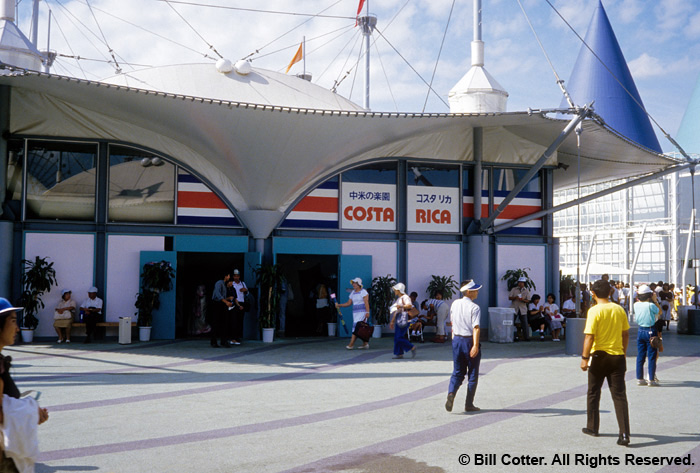Costa Rica
“Café Bonita”
The Republic of Costa Rica, in southern Central America, was discovered by Christopher Columbus in 1502. Its name means “rich coast.” The sister city off San José, the capital, is Okayama in Okayama Prefecture; Puntarena’s is Kesennuma in Miyagi Prefecture.
The Costa Rica Pavilion is painted in the same colors as the national flag: dark blue representing the beautiful sea and sky; white, the policy of peace and neutrality; and red, the pride and passion of its Latin people.
The theme of the exhibit is “Café Bonita,” the name of the highest grade of coffee bean produced in the highlands, over 1,000 m above sea level. Bonita means “pretty” or “beautiful.”
In addition to displaying crafts from this Central American paradise, the pavilion creates a feeling of the abundance of nature.
EXQUISITE CRAFTS AND THE WORLD'S LARGEST BEETLE On display are craft objects such as La Carreta (an ox-drawn wagon with beautiful geometric designs), and around the beautiful "Piedra de Indio" are plants such as yucca, dracaena, and exquisite orchids. Also introduced are the lifestyle of the Indians and the natural environment, which makes Costa Rica, with its stable politics and mild climate, such an attractive place.
At a snack corner, where the foods of Costa Rica are explained, various insects are on display such as Herakles, the world's largest beetle, butterflies, and other unique things to attract children. Café bonita, plants, coins, and stamps are available at the souvenir shop.

I had always thought of Japan as a tea-drinking nation but they do love coffee. This was one of several pavilions with an emphasis on coffee; there was one completely devoted to it. There was quite a line of school children inside anxious to see the world's largest beetle! (CD #5 Set 10 #22)
